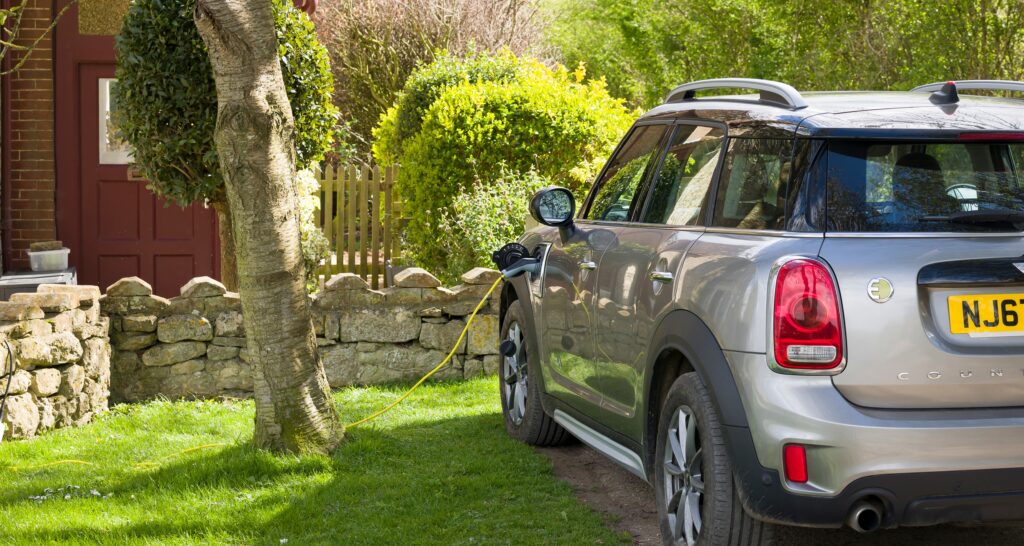Now that you know which charging speed you need, how do you decide between a tethered, untethered or solar charge point? What’s the difference and which electric car charger is right for you and your EV? It all depends on your circumstances and convenience for your lifestyle. Here’s the second in our series of useful tips and information to guide and help you choose:
Tethered
A tethered electric car charger has a charging cord integrated within it. This gives the convenience of plugging your EV in as soon as you arrive home, without having to first find your cable. Winding the cable up after use avoids the chance of you driving over the cable and damaging it. Other things to consider include whether you live on an open street/estate or have private parking. Whilst all electric car chargers can be locked, you may want to consider the visiblity of the charge point cable, as well as the risk of damage. In addition, how far away you park your car from the home charge point will have an effect. Some chargers only offer a 5m cable, whereas others will go up to 10m cable length.
Untethered (socketed)
An untethered home electric car charge point means that you will need your own charging cable to connect the EV and the home charging point. Some EVs come with a charging cable as standard, while others offer the cable as a costly optional extra. Less convenient than the tethered alternative, this relies on you finding your charging cable to charge your EV at home. However, a choice of charging cables of different lengths is less restrictive when parking your car at home. The risk of damage is also significantly reduced. If you have a current Type 1 socketed car, an untethered charger allows you to future-proof, as you can just upgrade your cable in the future.
In our experience, 90% of customers look for convenience and simplicity when choosing their home electric car charger, and often choose the tethered option.
Renewable technologies
Finally, besides choosing between a tethered or untethered home charger, it’s important to consider the ability of the charge point to interact with other renewable technologies you may have installed at your house.
Solar & Battery Storage electric car charger.
A solar home charging point allows you to use electricity generated from your home solar panels or the power stored in the batteries to charge your car. On average, 10 solar panels are required to generate sufficient power. You will also need a PV solar inverter so the power generated can be converted into electricity. As there is no standalone solar charge point currently available, this is an additional option on many home charging products. However, consideration must be given to this at the outset, as it cannot be retrofitted on many chargers. Whilst this option helps to reduce your carbon footprint and allows for creating energy during the day, a domestic solar battery storage system is required to store this energy if you charge your car at night.
Thinking about buying a home electric car charger?
Contact our knowledgable, friendly sales advisers today for a free, no-obligation quote on 0330 135 9990
Use our FREE product finder here: https://www.evolutionsolutions.co.uk/find-your-charger/
Don’t have time to discuss your home electric car charging needs right now? Leave your details here https://www.evolutionsolutions.co.uk/contact/ and one of our advisers will call you at a time that’s convenient for you.


